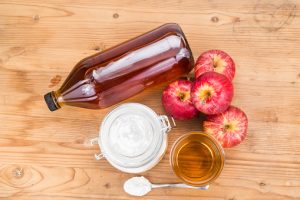 A hiatal hernia can be uncomfortable at the best of times, but when food enters into the equation, it can make the situation even worse, so a hiatal hernia diet is often recommended to sufferers.
A hiatal hernia can be uncomfortable at the best of times, but when food enters into the equation, it can make the situation even worse, so a hiatal hernia diet is often recommended to sufferers.
A hiatal hernia or, as some refer to it, hiatus hernia, takes place when part of the stomach pushes upward through the diaphragm. Under normal conditions, our diaphragm has a small opening called the hiatus through which our food tube, the esophagus, passes on its way to our stomach. When the stomach pushes up through this opening, that’s a hiatal hernia. It becomes uncomfortable when a large hernia allows food to back up in the esophagus. This leads to ongoing heartburn.
Advertisement
Diet for hiatal hernia sufferers includes certain precautions, such as not drinking water with meals. It is best to consume water an hour before or an hour after eating, because this helps the digestive system and significantly reduces the chances of heartburn occurring. Another step that seems to help those who suffer from hiatal hernia is to take frequent small meals, as opposed to three large meals per day. Thorough chewing of food seems to be helpful as well. Fortunately, heartburn symptoms associated with a hiatal hernia often can be controlled with diet and lifestyle changes.
A typical hiatal hernia diet should include seeds, nuts, and whole grains. About 50 percent of the diet can be fresh fruits, as well as raw or lightly cooked vegetables. Overprocessed foods should be avoided.
Hiatus hernia – foods more likely and less likely to trigger symptoms
There are certain foods that irritate hiatal hernia. If you or someone you know has been diagnosed with a hernia, consider that any foods that are highly acidic or that can make the esophageal sphincter weak should be avoided. The list below covers some of the foods that irritate hiatal hernia.
- Oranges, lemons, grapefruit
- Chocolate
- Fried foods, including fried chicken
- Garlic and onions
- Spicy foods
- Peppermint and spearmint
- Tomato-based foods, such as spaghetti sauce or chili
- Coffee, tea, alcohol, and carbonated beverages
- Whole milk, ice cream, and creamed foods
- Oil and butter
- Pickles
Foods and beverages at extreme temperatures should also be avoided. For example, you should allow a decaffeinated coffee or tea to cool down a little before drinking it.
While it may seem like you are limited in food choice because of a hiatal hernia, the truth is, there is still a lot you can eat. The food items listed below are less likely to trigger symptoms in those who have hiatal hernia.
- Bananas
- Apples
- Green beans, peas, carrots, and broccoli
- Low-fat or skim milk
- Low-fat yogurt
- Grain such as bran, oatmeal, cereals, rice, crackers
- Lean chicken and fish
- Pretzels, rice cakes, graham crackers
- Baked potato chips
- Low-fat sweets
Protocol for hiatal hernia diet
 If you are diagnosed with hiatal hernia, your doctor will discuss the best treatment option depending on the severity of your condition. It is not uncommon though for many specialists to suggest following the hiatal hernia diet sheet. In the beginning, this protocol involves raising the head end of the bed by putting bricks under the legs of the bed. This can prevent regurgitation of food while you are sleeping.
If you are diagnosed with hiatal hernia, your doctor will discuss the best treatment option depending on the severity of your condition. It is not uncommon though for many specialists to suggest following the hiatal hernia diet sheet. In the beginning, this protocol involves raising the head end of the bed by putting bricks under the legs of the bed. This can prevent regurgitation of food while you are sleeping.
The diet involves eating fresh fruits at five-hour intervals for two to three days. After that, a well-balanced diet is suggested, which starts with a glass of lukewarm water with a freshly squeezed lime and a teaspoon of honey when you first rise in the morning. The hiatal hernia diet sheet continues as outlined below.
- Breakfast – fresh fruit and a glass of milk, sweetened with honey
- Lunch – steamed vegetables, two whole wheat tortillas, and a glass of buttermilk
- Midafternoon – a glass of fruit or vegetable juice
- Dinner – bowl of vegetable salad with lime juice dressing, seeds, and fresh cottage cheese or a glass of buttermilk
- Bedtime – a glass of milk or an apple
Diet after hiatal hernia surgery
Some people who experience hiatal hernia are able to treat their symptoms through diet alone. Unfortunately, in other cases, surgery is required. A hiatal hernia diet after surgery is also important to recovery. Eventually, many people are able to return to their normal diet, but there are certain foods to eat after hiatal hernia surgery. They include clear liquid foods like popsicles, jelly, ice chips, fruit juice, and broth. Thick liquids, candy, and solid foods should be avoided at least for a day or so following the operation.
Hiatal hernia surgery is a major procedure that requires time to heal. When you reach the third week of recovery, soft foods such as oatmeal, yogurt, and strained soups are more tolerable. Many patients find that by the fifth week food items like mashed potatoes, fish, and pastas are fine.
Continuing to track and modify food consumption long after surgery is the key to avoiding reflux and the uncomfortable heartburn that many people with hernias have experienced. The best prevention tips for people who have had trouble with heartburn include: eating smaller meals, reducing stress since it increases the production of stomach acid, chewing properly, and trying to avoid eating within three hours of going to bed to lessen the chance of reflux.
Hernia specialists also recommend losing excess weight since it increases pressure on the stomach and pushes acid into the esophagus.
A post-hiatal hernia repair surgery will often come with several dietary restrictions with various stages of adherence. These stages include:
- Stage 1, week 1 — in the immediate stage after surgery, it is crucial for the patient to follow a strict liquid only diet to prevent injury and aid in the healing process. This will often include low fat and unflavored milk, fruit juice, pureed and finely strained soups, ice cream, jelly, custard, and tea or coffee that is not too hot.
- Stage 2, week 1 to 2 — very soft food is permitted with minimal lumps. This includes soft fresh fruits in puree form, pureed chicken, pasta, soft boiled eggs, and boiled and pureed vegetables.
- Stage 3 — the patient can now be given light food that can be chewed. This includes salads, toasts, chicken mince, stews, tender meats, biscuits, and breakfast cereals.
- Stage 4 — the patient is now ready to return to a normal diet and lifestyle with specific instruction to make sure their food is chewed well and meals are taken in smaller portions and more frequently.
Hiatal hernia diet: Cooking and lifestyle tips
Advertisement
 If you are cooking for yourself or someone else who is suffering from hiatal hernia, consider the following tips when preparing meals:
If you are cooking for yourself or someone else who is suffering from hiatal hernia, consider the following tips when preparing meals:
- Cook meats that are lean and skinless
- Consider ground turkey instead of ground beef
- Bake or broil foods instead of frying
- Skim all fat from meat during the cooking process
- Limit seasoning
- Avoid strong spices
- Use low-fat dairy products
- Limit butter, oil, and cream sauces
- Use cooking spray instead of cooking oil when you sauté
- Steam vegetables with water only
About 60 percent of those over the age of 60 get a hiatal hernia. It can be caused by an injury, being born with an unusually large hiatus, or by intense pressure on muscles surrounding the hiatus. This pressure can occur when coughing, vomiting, straining during bowel movements, and when lifting heavy objects. Whatever the cause, the vast majority of hernias are small and don’t cause serious problems. Yet, in some cases, there are uncomfortable consequences when acid backs up into the esophagus. If these symptoms are not addressed, it can lead to throat and voice problems, tooth decay, esophageal ulcers, and other complications.
Many people find that following a hiatal hernia diet is all it takes to control the symptoms of regurgitation and heartburn. It’s a lifestyle adjustment that seems well worth the effort when you consider the alternatives – discomfort and possible complications.
